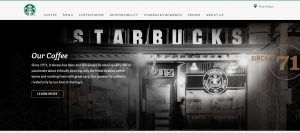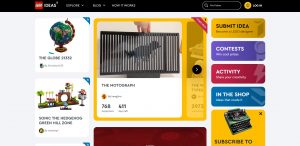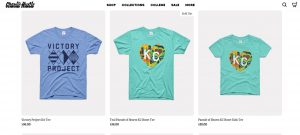Every business should use community marketing to retain consumers, secure customer loyalty, and give their buyers a voice. Yes, that’s how much it can do for your brand!
Having an online community can increase brand engagement by 21%! And the marketing community knows this as 85% of marketers support the power of community marketing.
So, what is community marketing? And how can you make the most of it for your brand?
Humans want to feel like they belong to something exclusive and true to their values. Developing an online community provides your buyers with that opportunity.
Business owners can attest to how vital it is for customer engagement, retention, and lead generation. In fact, 66% of businesses say it has increased customer retention, and almost 70% confirm that it has maximized their lead generation efforts.
We bet you want to know everything about how it works and how you can use a community marketing strategy to accelerate your sales and growth marketing in 2024.
This detailed guide will show you how to leverage community marketing to build a large network of loyal and engaged customers!
Plus, we have several community marketing examples for you to see how businesses have reached success through this growth-driven marketing approach.
Ready? Let’s get into it!
Community marketing is a non-intrusive form of growth marketing and customer engagement. The objective is for businesses to create a hub where their customers can interact with each other.
A community marketing strategy works because you can develop unity among your consumers. Your buyers can share positive experiences, questions, and concerns about your brand. Naturally, humans want to feel connected to something, and community marketing makes this possible.
Summary: What is Community Marketing?
Community marketing is when a brand or business creates a hub for their customers to interact and form a community. This hub is a place, usually online, where people can connect and share their experiences, ask questions, and seek support if needed.
Creating and maintaining an engaged community for your customers offers many advantages! For starters, their consumers become more involved in their business. And they experience higher retention rates. It also makes it easier to secure customer loyalty.
Let’s explore the main community marketing benefits for your business:
Not all your customers will leave reviews so you can get feedback. Over 80% of customers only leave reviews four times or less within a year. This makes it challenging to adapt your products to what your consumers want. Generating more positive social proof for your business also becomes tricky.
Fortunately, having a dedicated community provides a solution for you. Your buyers can share their love for your brand and actively participate in how you modify your services/products.
Giving your customers a voice also makes it much easier to do product research. All the information you need to evolve your products will be conveniently available in one place.
There’s nothing more disappointing than losing customers. While you can’t eliminate this, developing a community will surely increase your retention rates. As a community marketing manager, the more you can support your customers and keep them invested in your brand, the less likely they’ll stop purchasing.
But it’s not just that. Give your buyers as many reasons to stay as possible. By connecting them with other consumers who share similar pain points and values, they’ll feel a part of something much bigger. In turn, that unity will help you retain more consumers.
This complements the point above quite well. Communities of any kind allow people to feel like they belong. This feeling of belonging will tie your buyers to your business. If they walk away from your brand, they’re not just leaving what you offer, but they’re leaving a community of people they feel connected to.
Nearly 70% of consumers love participating in online communities because they can interact with people of similar interests. Giving your buyers this opportunity makes it easier to turn these consumers into brand advocates because of the emotional connection.
A simple example of how a sense of community builds customer loyalty is Facebook. Think about all the discrepancies and controversies around Facebook, but users across the globe remain loyal to this social platform. The key reason for this is that Facebook creates an environment for groups of like-minded people to interact with each other.
Interacting with a brand that doesn’t develop and nurture an emotional connection with its buyers is dissatisfying. You’re asking people you’ve never met to spend money on your business. But how can they feel comfortable doing this without an emotional connection and trust?
You can successfully solve this by directly engaging with your buyers to create more personal relationships with them. Rather than your consumers seeing you as just another money-hungry business without a face, they can feel like they’re interacting with a brand that cares.
To take this up a notch, as a community marketing manager, you can share personal moments about your brand with your community. For example, your first anniversary, your first 1000 sales, or reaching goals you’ve set for your business. Doing this shows there are people behind your business who care about customer appreciation and want your buyers to be a part of your brand’s journey.
Ever tried to troubleshoot an issue using any apps in Google’s suite? Then you’ll know how well the community supports each other. You can post a question, and community members will guide you to a solution. This is one of the top benefits because it takes the pressure off your support team.
Your support team will have more time to approach high-level or critical issues, while minor problems your community can solve among each other.
While this is an excellent benefit, you should still make it possible for your customers to contact support. There’s nothing more frustrating than not being able to get in touch with a business after investing in their product.
Summary: Benefits of Community Marketing
The advantages of community marketing are that your buyers will have a voice and the chance to give your business feedback. You can also increase your customer retention rates through engagement and secure customer loyalty. Plus, it allows you to humanize your brand to create more personal relationships with your buyers and your community will provide support to each other, taking pressure off your support team.
There are only 2 types of community marketing, and how they work is straightforward. It’s best to understand them both, so you can know which approach would work for your business.
This is when your customers naturally develop a community for your brand without your direct involvement. Examples of organic communities include fan pages on Instagram. Also, Facebook groups centered around one topic like Netflix Shows or a video game.
This form is ideal because it requires no effort on your side to create, and the community will expand through word of mouth. This isn’t simple to achieve without social proof, and you should already have a loyal customer base.
Another aspect to consider for organic communities is that you don’t have much control over what buyers share and post. Consider this factor to avoid misinformation about your brand spreading.
This is when businesses like yours, invest money into developing and growing a community. Of course, this is more certain than an organic approach because you have money behind it. However, not all businesses have the capital to invest.
Unlike the organic alternative, the approach gives you much more control over your community. This factor is ideal so you can regulate how members interact with each other.
To get your money’s worth from a sponsored approach, don’t expect to invest money and have your community grow on its own. Focus on developing an excellent brand reputation, social proof, and providing a product tailored to your audience.
Source: GoDaddy
“An online community can increase brand engagement by 21%”
To be successful, you need to have a strong community marketing strategy in place. Here are some best practices to follow as your build your brand’s marketing community:
If you want to reap the full benefits, show your customers appreciation for joining your marketing community. Doing this will show your buyers you care about them and recognize their support.
You can show your community appreciation in the following ways:

We all know how rowdy the internet can get, so you need to be clear about what’s allowed and what isn’t for your community. Successful communities can fall apart if members are disrespectful and rude toward one another. You want your community to be a safe space for your buyers to interact and show love for your business, so you need rules to make this possible.
You can communicate these rules and guidelines in various ways. A few ways to share this information with your community members include:
Businesses must review their rules and guidelines every so often to ensure they’ve grown with their community. Also, make it easy for members to escalate issues so your team can quickly solve this.
You have to be consistent in what you post to your community and when you engage with the members. It won’t be possible to grow a community if you’re not consistently interacting with your members. For sponsored community marketing, you can’t expect customers to interact if you’re don’t.
When we say regular check-ins, we don’t mean once or twice a week. No, we mean once a day, at the least. Checking in with your community makes it easier to perform all the other best practices we’re walking you through.
Set notification alerts for mentions, comments, or direct messages so you or your team can quickly get on it. Ultimately, it’s up to you to ensure your community is working as it should.
When your followers offer ideas, opinions, and complaints, don’t ignore them. Of course, you won’t be able to action every single request from your followers, but that doesn’t mean you can’t acknowledge what they have to say.
For example, if a member suggests you should change your product but you know it’s not possible right now, thank them for the suggestion. Mention that you’ll consider this for future product developments or why it wouldn’t work.
Your members will notice how hands-on you are, further engaging them in your business. Remember, these people use your product, so what they have to say matters.
If you know anything about hosting a social media contest, you’ll know how well they engage users. We can say the same for events. This practice will solidify the relationships between members of your community as they’re all participating in something fun together.
But you can’t just throw a few things together and call it a competition or event. Start by understanding what will interest your audience. To get this information, ask them! Then you can directly find out what your audience will enjoy doing, and you’ll be getting them excited for something too.

A strategic way to go about community building is to pretend you’re also a community member. You can get a community marketing manager to participate on behalf of your business. Or you can do it yourself. Either way, share your opinions, thoughts, ideas, and experiences to become involved in your community.
This practice allows you to show a personal side of your business and gives your community a human-like feel.
Summary: Community Marketing Best Practices
To be a successful at community marketing manager you need to practice customer appreciation, create rules and guidelines for your community and consistently interact with your members. It’s also vital to check in often, respond to your followers, participate in the community as if you’re a member, and host competitions and events for engagement.
To help you get your online community started, we’ve reviewed and chosen some of the top community marketing examples to illustrate how different brands have benefited from this marketing method.
You can learn a lot from community marketing case studies and see how it works in practice. We have included community marketing case studies from a variety of brands, so you can see how it works in different contexts.
Here are some great community marketing case studies to learn from:

Starbucks didn’t just stop at being a globally-beloved coffee shop, they took the next step and developed an online community. One small action Starbucks took that made a huge impact on their brand and their online community is referring to their employees as “partners”.
By doing this, Starbucks baristas were naturally motivated to share their Starbucks experience through the Instagram community, getting more users interested in this brand. Starbucks also holds social media competitions regularly and has been started many social initiatives programs like volunteer matching services.
How this initiative works is simple – Starbucks matches their partners with members of their community to help anybody in need. This boosted the credibility and popularity of Starbucks. And it also strengthened their community as all members are moving toward the same goal.
Starbucks also has a rewards program that community members adore. Members earn stars for certain actions, like making a purchase, attending Starbucks events, and playing mini-games. This rewards program is available on mobile, allowing members to access it and participate anywhere.
Results: Through their online community, Starbucks has generated over 150,000 community marketing ideas and has implemented hundreds of them. These ideas are from consumers themselves which have greatly helped Starbucks become a billion-dollar franchise.
Key Takeaway: Don’t solely focus on making your consumers feel a part of your company, but do the same for your employees. The more motivated your employees are, the easier it will be for them to engage in and promote your community. Social initiatives are also vital to bind a community together.

Lego Ideas is an online community by Lego that gets its fans involved in how they design their products. Any Lego-lover from age 5 to 95 can submit an idea for a product design, and should Lego develop it. They’ll get a percentage of the sales! Does it get any better than this?
You can find this online community through Lego’s website. This company also holds contests to entice their fans, gather feedback and solidify their customer’s loyalty. Community members can post to the website too, and interact with one another to share ideas, their Lego projects, and just about anything to do with this brand.
Members can also find activities. These are projects other members have worked on and shared with the community. Another essential aspect of how Lego has expanded its community is that it had community members vote for the winner of contests and competitions.
Results: By developing and growing their online community, Lego saw a significant increase in profit. Customer sales increased by 22% over one year. Lego’s overall revenue grew by 27%.
Key Takeaway: Getting your customers involved in your product design and development is one of the best community marketing ideas for engagement. And giving them an incentive for the designs you use is also a strategic move to get them invested in your business.

Similar to the rewards marketing approach Starbucks used, Adidas grew its online community with a rewards program at the center. Interested consumers can join this community through their website and earn points for playing mini-games, attending events, participating in workouts, and uploading content.
What’s unique and quite impressive about these community marketing ideas is that the company doesn’t tailor its rewards around the feedback of its customers. Instead, Adidas has established such an intricate and well-rounded understanding of their buyers, they’ve set up all the rewards and activities from their knowledge.
Of course, this strategy isn’t ideal for small businesses. But considering how long Adidas has been in the game, it’s no surprise they know what their consumers want.
Results: Unfortunately, Adidas hasn’t published any information on the results of their online community.
Key Takeaway: Minimizing their marketing work, Adidas incentivizes their consumers for creating user-generated content. They also use gamification to engage customers and encourage them to spend more time racking up points.

Charlie Hustle brings people together with two popular elements – sports and your hometown. The products they sell are sports T-shirts with Kansas City branding. This is one way to group sports fans from the same city. Think about it, supporting the same team and coming from the same place will certainly connect people.
The apparel Charlie Hustle sells also achieves the approach of a community feel as consumers can proudly wear their vintage, Kansas T-shirts. Doing this makes members feel a part of something bigger and gives them a “uniform”.
Like Starbucks, Charlie Hustle also has a social initiative. The money they generate from sales they invest into various social projects in Kansas City, such as educational programs.
Results: There is no accurate information for Charlie Hustle’s results from their online community
Key Takeaway: Charlie Hustle didn’t develop an online community as an extension of their business. Instead, their business is an entire community on its own. They also chose to build a community from what was already an existing community – people from the same city.

Grouping all makeup fans and skincare lovers, Sephora created this online community accessible through their website. This community allows people interested in beauty to share tips, tricks, experiences and speak about their favorite Sephora products.
Members don’t have to be expert beauticians with years of experience, this community bands together beauty fanatics of all backgrounds.
There are five main elements of this online community. The first is the homepage, where members can have general discussions. Then you get groups that allow community members to converse on specific topics. There is also a section for ratings and reviews, so Sephora can gain user-generated content, and lastly, an FAQ section.
Community members can also join events, and Sephora offers a rewards program too. To gain points, members must leave reviews, upload content, and make purchases.
Results: Sephora currently has over 5 million community members, with 80% of them being responsible for this beauty brand’s sales. And Sephora increased its brand engagement by 22%.
Key Takeaway: Promoting user-generated content isn’t the only aspect you should take from this case study. But also notice the idea of creating groups within your community. If your community is as diverse as Sephora’s developing smaller groups makes sense to allow people with similar interests to discuss specific topics.
Many community marketing benefits prove how effective building an online community is. Just from the examples alone, it’s clear that consumers want to feel they like belong and are a part of something. Although developing and growing a community takes a lot of time, effort, and hard work, once the ball is rolling, your members will do most of the work.
Use the examples we included for inspiration and determine how you can use this for our community. Don’t forget to stay consistent, show appreciation to your customers, use the advice from your followers, and do as much as you can to keep your community engaged.
Community marketing is a form of growth marketing and brand engagement strategies. The purpose of this is to create an online community of consumers and potential buyers. Within this community, members can interact with each other and discuss everything to do with your brand. These communities become a platform to connect people who are interested in your product and turn them into brand advocates. Read this article to find out more, including the top community marketing benefits, community marketing examples, best practices, and community marketing case studies.
Community marketing is a marketing approach centered around developing and growing an online community for your brand. These communities connect people who are interested in your offerings and allow you to create unity between your customers. To find out more about the benefits, the types of community marketing and community marketing case studies, read this full article.
Community marketing is important as it allows your buyers to feel connected to one another and a apart of something bigger. It gives you the opportunity to make your brand a lifestyle for your consumers. If you're wondering "what is community marketing?" - this article has everything you need to know including it's benefits, the types of community marketing and brands that use this marketing technique.
Convince & Convert: 9 Surprising Statistics You Didn’t Know About Business and Community
PeerBoard: 105 Online Community Statistics To Know: The Complete List (2022)
Podium: 2021 State of Reviews
Vanilla Forums: Vanilla Online Communities: The Benefits and Impacts on Organizations 2019